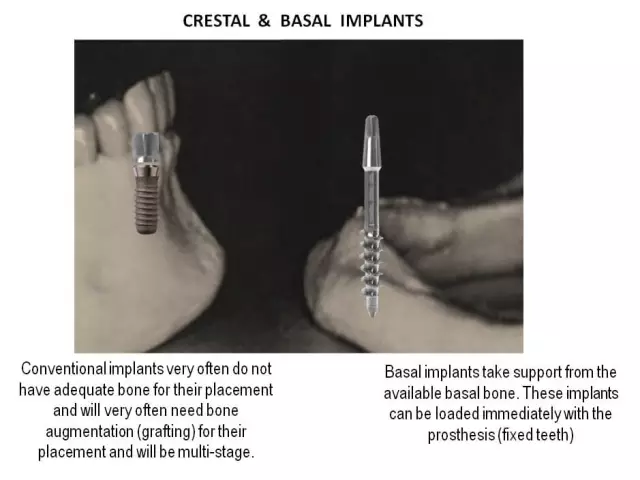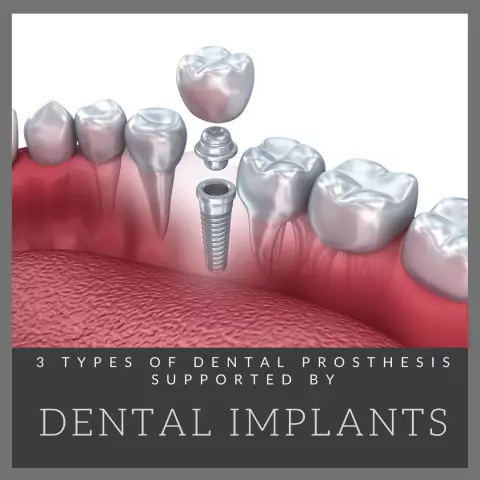- Author Rachel Wainwright [email protected].
- Public 2023-12-15 07:39.
- Last modified 2025-11-02 20:14.
Fluorosis

Fluorosis is an endemic (locally specific) or occupational disease, the cause of which lies in the high content of fluoride in water, food and the environment. In the 18th century, due to the characteristic changes in the tooth enamel, fluorosis was called "speckled enamel" or "speckled teeth"
The risk group for occupational fluorosis includes workers in industries that are associated with the release of fluorine compounds into the air. Highly concentrated fluorine compounds in a gaseous state provoke atrophic changes in the mucous membrane of the respiratory tract, as a result of which the development of diseases such as laryngitis, rhinitis, pharyngitis and fluorosis is possible. Often, changes in internal organs and bone tissue occur. The etiology (cause) of endemic fluorosis is not always directly dependent on the fluoride content in water (the concentration rate of this element is 0.7-1.3 mg / l). An important role in the development of fluorosis is played by adherence to the diet, the living environment and the time spent in such a zone. Social factors are also important.
The main symptoms of fluorosis
The most typical manifestations of this disease in dentistry - most often it is limited to the defeat of the tooth enamel. At the same time, fluorosis practically does not affect milk teeth, because their mineralization occurs even in the womb, therefore, it is believed that the placenta retains a large amount of fluoride. Although, it is possible that with a very high content of fluoride, dental fluorosis can appear even in very young children.
Affecting tooth enamel, fluorosis in children most often captures symmetrical permanent teeth, for example, central incisors. As a rule, the first clinical symptoms appear soon after eruption. At the same time, the enamel becomes dull, loses its transparency, and spots appear on its surface, at first milky-white, and then yellow-brown in color.
The degree of fluorosis lesion, according to the WHO classification:
- A very mild form of fluorosis. The color of the enamel is practically unchanged.
- Mild form of fluorosis. The appearance of milky white stripes or the same small spots on single teeth is observed. In this case, the affected area does not exceed 25% of the total area of the tooth crown.
- Moderate form of fluorosis. The area affected by chalky spots and stripes reaches 50%.
- Medium - in addition to chalky, brown or yellowish spots appear. This degree is characterized by susceptibility to caries.
- Severe fluorosis. Most of the crown of the tooth is damaged, and a violation of the structure of hard tissues is added to the pronounced pigmentation. Deformation of the crown occurs, the enamel is subject to abrasion and chipping. In the third degree, fluorosis can affect the bones of the skeleton.
Diagnosis of fluorosis
It will not be difficult to diagnose dental fluorosis in both a child and adults. At the same time, both a dentist and a pediatrician can detect fluorosis in children. The diagnosis of this disease is based on clinical manifestations characteristic of different degrees of fluorosis. However, the specialist will have to differentiate it from caries in the stain stage. If caries is characterized by single lesions located in typical places, then fluorosis is manifested by multiple changes that appear soon after the eruption of the main teeth.
Treatment of dental fluorosis
If the diagnosis has shown that your child has fluorosis, treatment is carried out depending on the severity of the disease.
Treatment methods
- At the first, mild degree, fluorosis is treated with bleaching followed by remineralizing therapy - saturation of hard tooth tissues with compounds of various microelements (phosphorus, calcium, etc.)
- In case of moderate and severe fluorosis, when destructive disorders of the enamel or tooth occur, such methods of treatment are used as: restoration of the affected areas using composite materials, or using orthopedic structures
Prevention of the disease

Fluorosis prevention includes collective and individual interventions.
Public preventive measures for fluorosis include:
- Construction of new or reconstruction of old water treatment plants that could defluorize water
- Mixing of waters with different concentrations of fluorine, which will lead to a decrease in the content of this element
- The use of water filters from burnt bone or sulphate alumina
- Providing Summer Stays for Children in Low Fluoride Areas
- Inadmissibility of using water with high levels of fluoride in children's institutions, and providing them with imported water
- Import into these territories of vegetables and fruits grown in places where the fluoride content is within the normal range
To prevent the development of fluorosis, individual prevention is also necessary, including:
- Change of the source of drinking water. For which you can use bottled water with an optimal mineral content.
- Provide breastfeeding for newborns whenever possible
- Fortification of food with vitamins of groups B, C, D, proteins, calcium and phosphorus salts. Exclusion from the diet of foods containing a large amount of fluoride - sea fish, ghee, fatty meat and strong tea.
- Increasing the amount of dairy products, vegetables and fruits - they have an anti-fluorogenic effect. For the winter season, an increase in the child's diet of multivitamins, calcium gluconate and fish oil intake is necessary. Naturally, all changes in the diet should be carried out after consulting your doctor.
- Thorough and systematic dental care, use of toothpastes containing calcium glycerophosphate
These preventive measures help to reduce the manifestations of a disease such as fluorosis in children. And a systematic visit to the dental office will make your smile not only joyful, but also open!
YouTube video related to the article:
The information is generalized and provided for informational purposes only. At the first sign of illness, see your doctor. Self-medication is hazardous to health!






